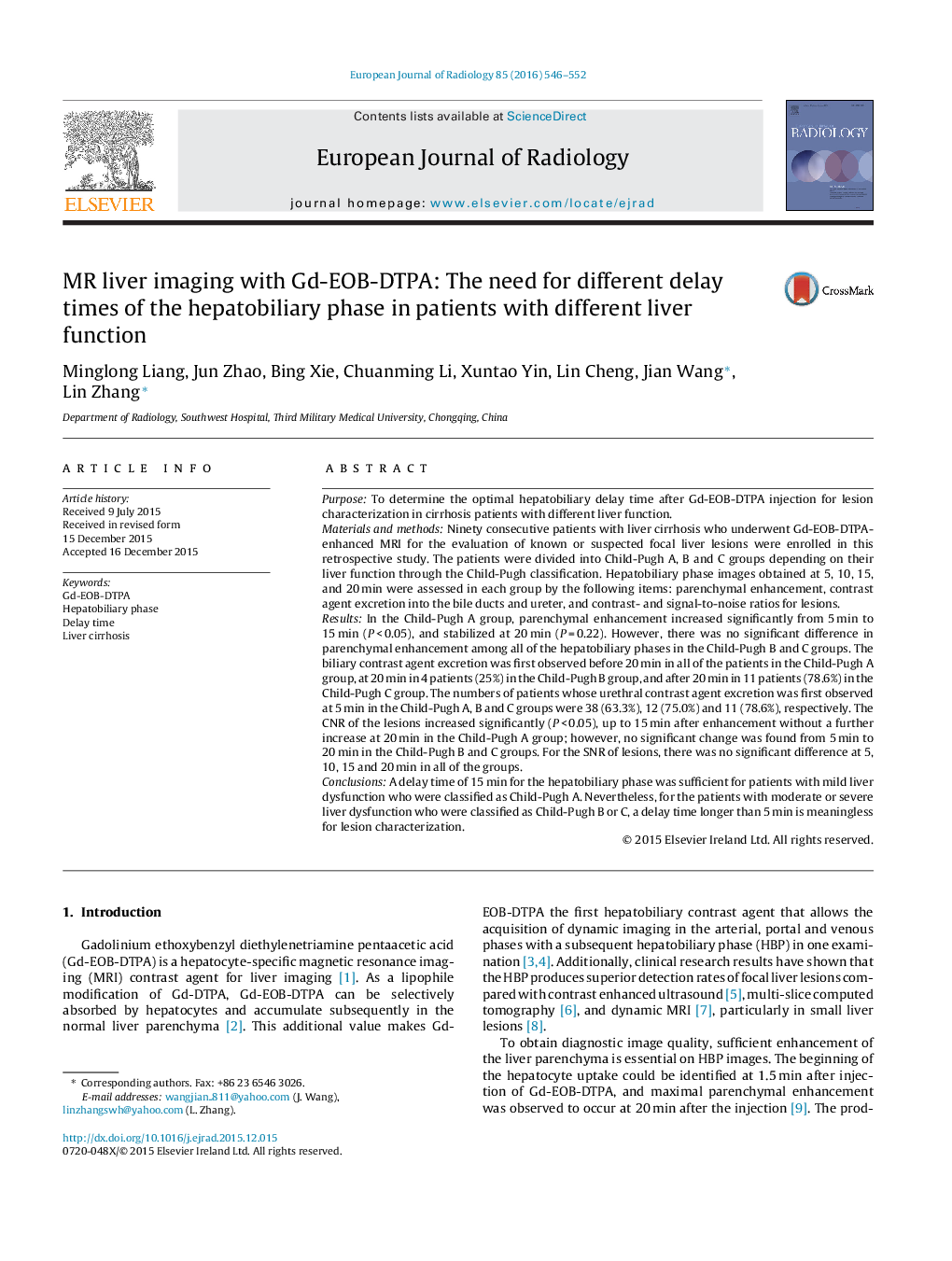| کد مقاله | کد نشریه | سال انتشار | مقاله انگلیسی | نسخه تمام متن |
|---|---|---|---|---|
| 4225042 | 1609744 | 2016 | 7 صفحه PDF | دانلود رایگان |

PurposeTo determine the optimal hepatobiliary delay time after Gd-EOB-DTPA injection for lesion characterization in cirrhosis patients with different liver function.Materials and methodsNinety consecutive patients with liver cirrhosis who underwent Gd-EOB-DTPA-enhanced MRI for the evaluation of known or suspected focal liver lesions were enrolled in this retrospective study. The patients were divided into Child-Pugh A, B and C groups depending on their liver function through the Child-Pugh classification. Hepatobiliary phase images obtained at 5, 10, 15, and 20 min were assessed in each group by the following items: parenchymal enhancement, contrast agent excretion into the bile ducts and ureter, and contrast- and signal-to-noise ratios for lesions.ResultsIn the Child-Pugh A group, parenchymal enhancement increased significantly from 5 min to 15 min (P < 0.05), and stabilized at 20 min (P = 0.22). However, there was no significant difference in parenchymal enhancement among all of the hepatobiliary phases in the Child-Pugh B and C groups. The biliary contrast agent excretion was first observed before 20 min in all of the patients in the Child-Pugh A group, at 20 min in 4 patients (25%) in the Child-Pugh B group, and after 20 min in 11 patients (78.6%) in the Child-Pugh C group. The numbers of patients whose urethral contrast agent excretion was first observed at 5 min in the Child-Pugh A, B and C groups were 38 (63.3%), 12 (75.0%) and 11 (78.6%), respectively. The CNR of the lesions increased significantly (P < 0.05), up to 15 min after enhancement without a further increase at 20 min in the Child-Pugh A group; however, no significant change was found from 5 min to 20 min in the Child-Pugh B and C groups. For the SNR of lesions, there was no significant difference at 5, 10, 15 and 20 min in all of the groups.ConclusionsA delay time of 15 min for the hepatobiliary phase was sufficient for patients with mild liver dysfunction who were classified as Child-Pugh A. Nevertheless, for the patients with moderate or severe liver dysfunction who were classified as Child-Pugh B or C, a delay time longer than 5 min is meaningless for lesion characterization.
Journal: European Journal of Radiology - Volume 85, Issue 3, March 2016, Pages 546–552